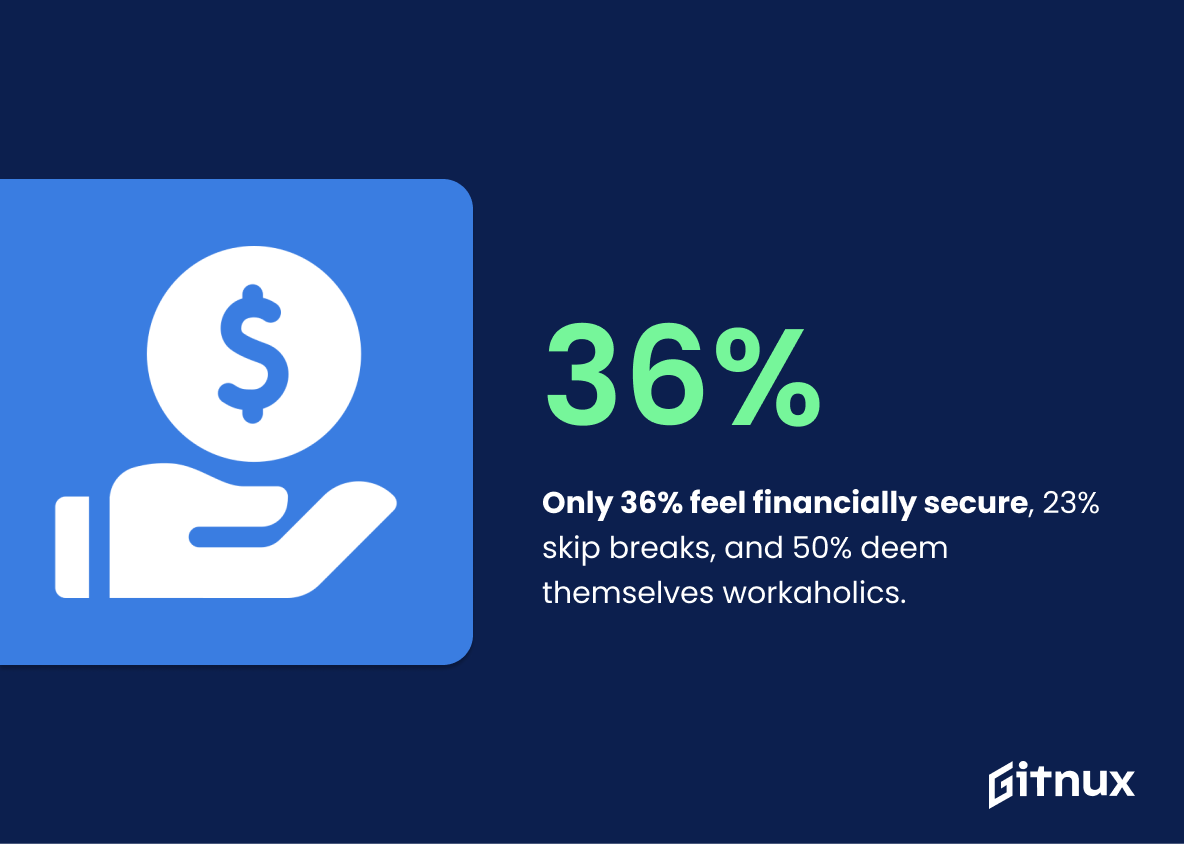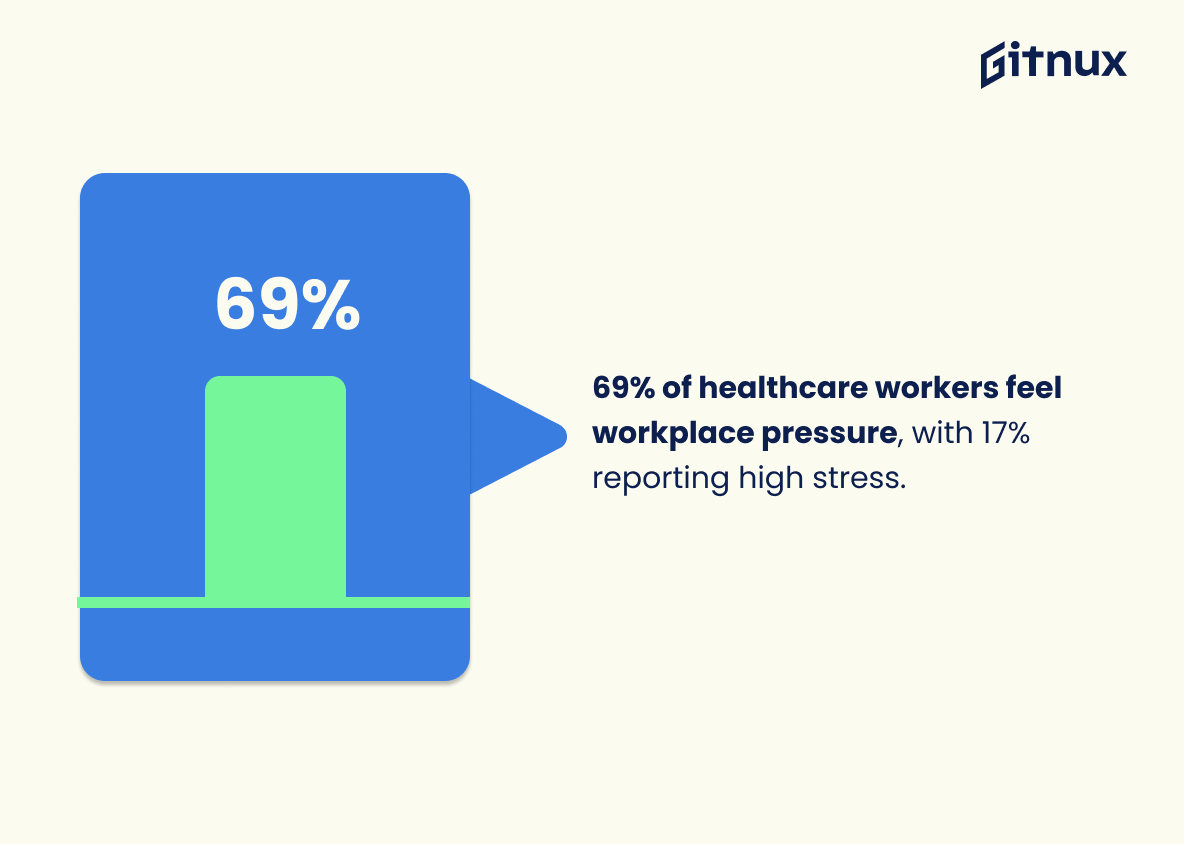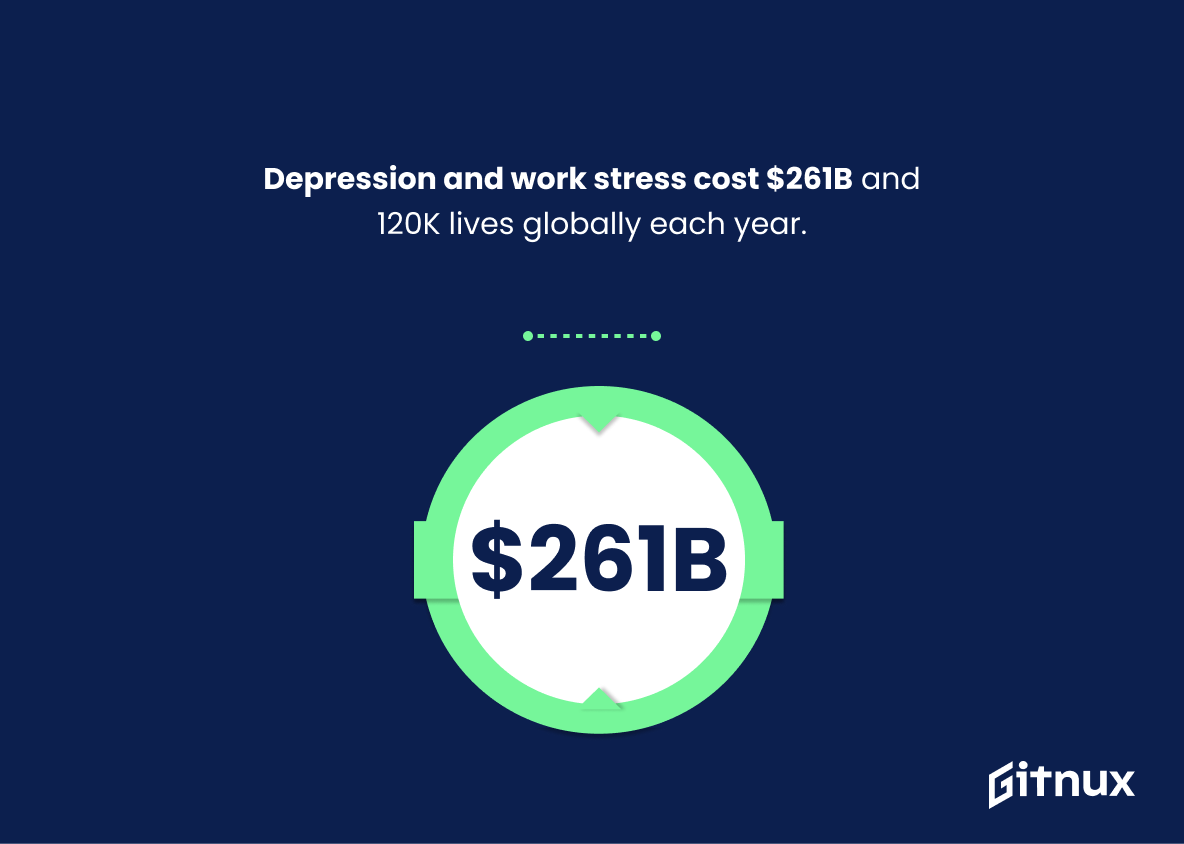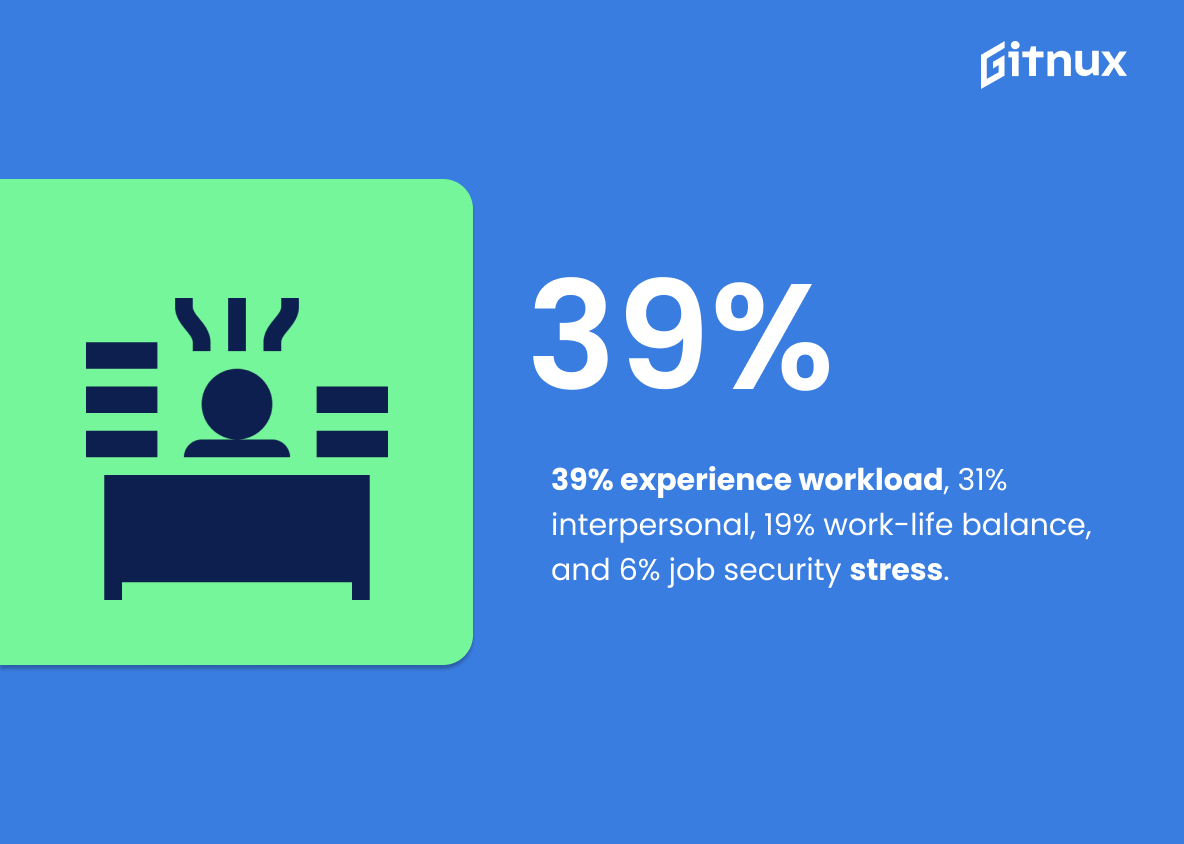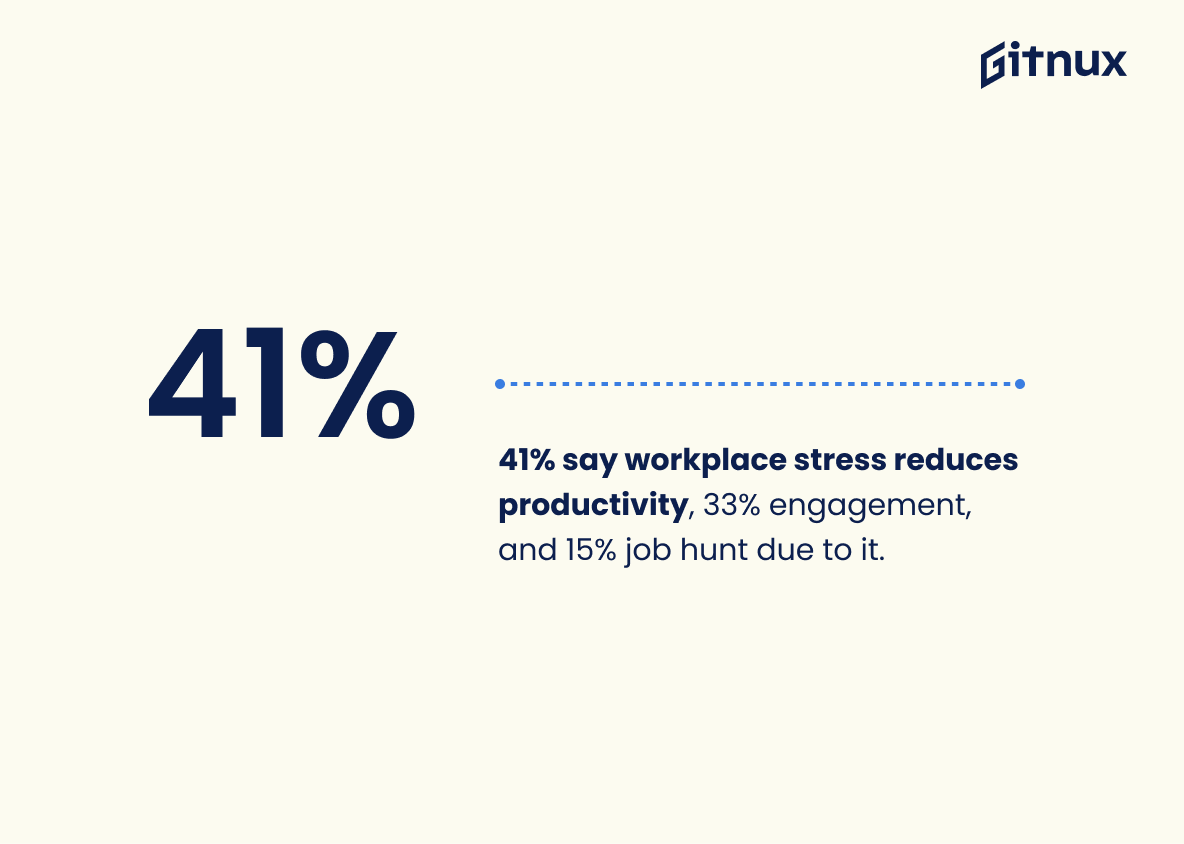Workplace stress is an issue that affects many of us in our daily lives. It can lead to physical and mental health issues, decreased productivity, and even job loss. But how common is workplace stress?
In this blog post, we’ll take a look at some of the latest workplace stress statistics to get a better understanding of the issue. We’ll also discuss some of the potential causes of workplace stress and how employers can help reduce stress in the workplace. So, let’s get started.
Workplace Stress: The Most Important Statistics
US businesses lose up to $300 billion yearly due to workplace stress, and 79% of US workers are either ready to quit or have already quit a job due to stress.
44% of people reported physical fatigue, a 38% increase since 2019, indicating that burnout and stress are at all-time highs.
Workplace Stress Statistics Overview
Only 36% of employees feel financially secure, 23% take no breaks, and 50% consider themselves workaholics; employee stress is a common thing.
This shows that a large majority of employees are not feeling financially secure, are not taking breaks, and are overworking themselves, which can lead to high levels of stress.
Workload is the most common cause of workplace stress at 44%, followed by lack of support (14%) and changes at work (8%).
An insight into the common causes of stress in the workplace, can help employers and employees better understand and address the issue. Knowing the most common causes of workplace stress can help employers create strategies to reduce stress and improve employee wellbeing.
US businesses lose up to $300 billion yearly due to workplace stress, and 79% of US workers are either ready to quit or have already quit a job due to stress.
The high rate of workers ready to quit or who have already quit due to stress indicates that the issue is widespread and has a major impact on the US economy. Companies need to take proactive steps to reduce workplace stress in order to retain employees and reduce the financial losses associated with it.
69% of surveyed healthcare employees feel under pressure at their workplace, with 17% describing their stress level as high.
This statistic highlights the prevalence of workplace stress among healthcare employees, which can have a significant impact on their overall wellbeing and job performance. It is important for healthcare employers to recognize the potential for workplace stress and to take steps to reduce it.
Depression and work-related stress are costly and deadly issues, costing the global economy $261 billion and 120,000 lives yearly.
It emphasizes the importance of taking mental health seriously and investing in preventative measures to reduce the economic and human cost of mental health issues.
39% of workers experience stress due to workload, 31% due to interpersonal issues, 19% due to juggling work and personal life, and 6% due to job security.
39% of U.S. employee stress is caused by workload, and 82% of people lack a time management system.
It is therefore significant to have a good time management system in place to help employees manage their workload and reduce stress. Without a system in place, employees are more likely to become overwhelmed and stressed, leading to decreased productivity and efficiency.
44% of people reported physical fatigue, a 38% increase since 2019, indicating that burnout and stress are at all-time highs.
More and more people are feeling overwhelmed and exhausted due to the demands of their job, which can lead to decreased productivity and job satisfaction. This is an important issue to address in order to ensure that employees are able to maintain a healthy work-life balance and remain productive and engaged in their work.
41% of workers report that workplace stress decreases their productivity, 33% report decreased engagement, and 15% are searching for a new job due to stress.
Supplementary Statistics
83% of US employees suffer from work-related stress.
It highlights the need for employers to take proactive steps to reduce stress in the workplace and ensure that their employees are able to work in a healthy and productive environment.
14% of the global workforce is affected by burnout from job-related stress.
This serves as a call to action for employers to prioritize the mental health of their workforce and create a safe and healthy work environment.
35% of UK working adults experience work-related stress.
This highlights the need for employers to take proactive steps to reduce stress in the workplace and ensure that their employees are supported and have access to the resources they need to manage their stress levels. It also serves as a warning to individuals to be mindful of their own stress levels and take steps to manage them.
In Canada, almost 500,000 employees miss work weekly due to work-related stress.
It is a major issue that affects a large number of employees, and that it is something that needs to be addressed. It also serves as a warning to employers that they need to take steps to reduce stress in the workplace, or risk losing valuable employees.
Work-related stress costs employers in the United States over $300 billion in paid sick days and missed work hours.
This is a stark reminder of the immense financial burden that workplace stress can impose on employers in the United States. It highlights the need for employers to take proactive steps to reduce stress in the workplace, as the costs associated with it can be staggering.
In Australia, approximately 92% of work-related mental disorders are caused by mental stress.
Employers need to take proactive steps to reduce the amount of mental stress their employees experience, as it can have a significant impact on their mental health. It also serves as a warning to employees to be aware of the signs of mental stress and to take steps to manage it before it becomes a problem.
12.8 million working days were lost due to work-related stress, anxiety, and depression in the UK in 2018/2019.
It highlights the sheer amount of time lost due to these issues, and the impact it has on individuals, businesses, and the economy as a whole. It serves as a call to action for employers to take steps to reduce workplace stress and create a healthier, more productive work environment.
77% of employees reported physical symptoms related to stress at work.
56% of US employees say job-related stress is the top cause of stress in their lives.
This is a powerful reminder of the prevalence of job-related stress in the lives of US employees. It displays the need for employers to take proactive steps to reduce stress in the workplace and ensure their employees are able to maintain a healthy work-life balance.
In the European Union, over 40 million workers experience work-related stress.
Health care and social assistance, public administration, and education sectors have the highest rates of workplace stress in the United States.
Health care and social assistance, public administration, and education are all sectors that require a high level of dedication and responsibility, and the fact that they have the highest rates of workplace stress speaks to the immense strain that these workers are under. This statistic is a reminder that workplace stress is a real and pressing issue that needs to be addressed.
55% of workers say they are less productive due to work-related stress.
1 in 5 workers in Japan admit to facing work-related stress at dangerous levels.
It is a call to action for employers to ensure that their employees are not facing dangerous levels of stress, and to provide support and resources to help them manage their stress. This statistic is a powerful reminder that workplace stress is a real issue that needs to be addressed.
In the United States, 76% of employees identified work as a significant source of stress.
The majority of employees are feeling the pressure of their job, and that this is a problem that needs to be addressed. It serves as a call to action for employers to take steps to reduce stress in the workplace and create a healthier and more productive environment for their employees.
Women are 60% more likely than men to suffer from work-related stress.
Employers should take proactive steps to ensure that their female employees are not disproportionately affected by workplace stress. It also serves as a call to action for organizations to create a more equitable and supportive work environment for all employees.
30% of employees experience stress from balancing work and personal life.
Millennials report the highest average stress levels (5.7 out of 10) in comparison to other generations.
64% of workers blame their job for their stress, while 34% cite job instability as a stressor in their lives.
Job-related stress and instability can be major sources of stress for many people, and that employers need to take steps to ensure their employees are supported and their work environment is as stress-free as possible.
In the EU, common work-related stressors include job demands, lack of support, job insecurity, and work-life imbalance.
Job demands, lack of support, job insecurity, and work-life imbalance are all common stressors that employees face, and that these issues need to be addressed in order to create a healthier and more productive work environment.
In South Africa, 51% of employees had experienced high levels of work-related stress in the past year.
This serves as a warning to employees to be aware of the signs of stress and take steps to manage it before it becomes a serious problem.
Conclusion
In conclusion, workplace stress is a serious issue that affects many people. It can lead to physical and mental health problems, decreased productivity, and even job loss.
Employers should take steps to reduce workplace stress, such as providing stress management training, flexible work schedules, and other resources to help employees cope with stress. By doing so, employers can create a healthier and more productive work environment for everyone.
References
1 – https://www.quantumworkplace.com/future-of-work/statistics-you-need-to-know-about-employee-stress
2 – https://www.myshortlister.com/insights/workplace-stress-statistics
3 – https://www.zippia.com/advice/workplace-stress-statistics/
4 – https://healthcareers.co/workplace-stress-statistics/
5 – https://www.smallbizgenius.net/by-the-numbers/workplace-stress-statistics/
6 – https://www.stress.org/workplace-stress#:~:text=The%20main%20causes%20of%20workplace%20stress%20are%20workload,and%20personal%20life%20%2819%25%29%2C%20and%20job%20security%20%286%25%29.
7 – https://www.zippia.com/advice/time-management-statistics/
8 – https://www.apa.org/monitor/2022/01/special-burnout-stress
9 – https://www.statista.com/chart/26363/share-employees-feeling-stress-timeline/
10 – https://www.springworks.in/blog/workplace-stress-statistics/
11 – https://www.timeslive.co.za
12 – https://osha.europa.eu
13 – https://www.statista.com
14 – https://oshwiki.eu
15 – https://www.gallup.com
16 – https://www.business.com
17 – https://www.workplacestrategiesformentalhealth.com
18 – https://www.hse.gov.uk
19 – https://www.psychologistworld.com
20 – https://transcend.today
21 – https://www.apa.org
22 – https://www.eurofound.europa.eu
23 – https://www.japantimes.co.jp
24 – https://www.safework.nsw.gov.au
25 – https://www.perkbox.com
26 – https://www.bls.gov
ZipDo, cited June 2023: Workplace Stress Statistics
